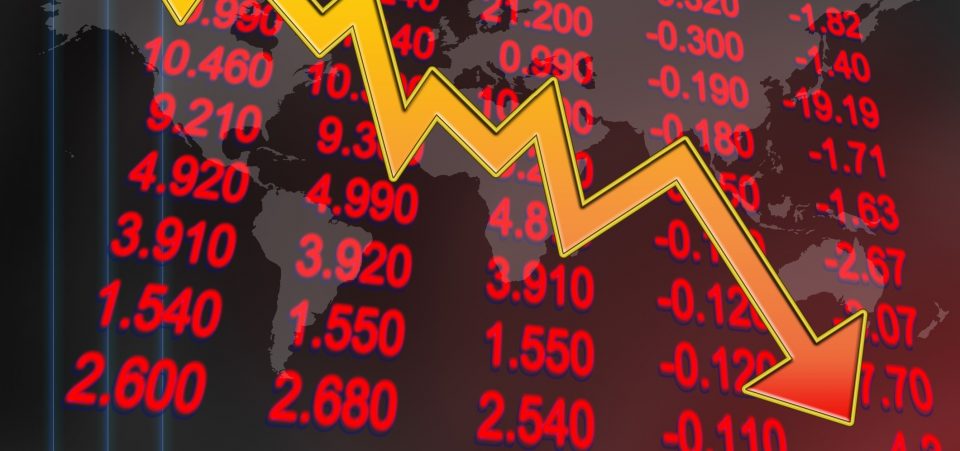Trump Rally Could Result in a Dow 20,000, but It Could Just as Easily Produce a Major Market Crash
Will the Dow hit 20,000 already? During the first week of trading in 2017, investors focused on the United States. They are all waiting for the magic Dow 20,000. This target might be within reach, but how long can it be sustained? The recent minutes of the U.S. Federal Reserve, in so many words, expressed unease over a potential market crash—of a financial meltdown—because of President-elect Donald Trump.
The Fed has had a mixed record at best, but there is no question that the Dow will hit 20,000.
Now it is the turn of the jobs data. Overall, unemployment dropped and Americans are slightly more confident. But this has two effects, one of which is a financial meltdown. The Fed has more reason to raise interest rates, but this only adds to the uncertainty and the risk of a bigger thump in case of a market crash under Trump.
Even as the Dow approaches the big number, the Dow 20,000 remains elusive. Every time the Dow Jones gets within a dozen points short of 20,000, it drops again. The pattern has been rather consistent since the end of last year. Meanwhile, rather than being buoyant, all major European stock exchanges have either dropped slightly or stayed level.
Even if/when the Dow should hit 20,000, the U.S. labor market did actually reveal one of the triggers of a market crash. The new weekly claims for unemployment benefits fell to a minimum of almost 43 years. But the private sector created fewer jobs in December 2016 than expected.
Even if Benefit Claims Are Lower, the Actual Unemployment Rate Is Also Higher
In December 2016, the economy created 156,000 jobs, but analysts had expected 183,000. Unemployment rose from 4.6% to 4.7%. Meanwhile, holiday retail sales were weak, as shown by Macy’s Inc‘s (NYSE:M) dreary performance. (Source: “Retail sector tanks as Macy’s and Kohl’s get crushed by weak holiday sales,” CNBC, January 5, 2017.)
The Fed has downplayed the unemployment figures, putting more faith in the jobless benefit claims. There’s no telling how the planned rate hikes could affect the markets and the economy. The high U.S. dollar will encourage imports and outsourcing, just as President Trump will try to promote more domestic production.
Indeed, Trump is the unknown factor. The markets are buoyant with the prospect of lower taxes and the resulting stimulus on spending, but it remains to be seen whether Trump can deliver. The reality is that economies are no longer just national or domestic. Economies are interconnected, and Trump will face yuge obstacles trying to break their networks down.
Trump Can Shake the Markets With a Simple Tweet
As an example, consider Toyota Motor Corp (ADR) (NYSE:TM). Trump threatened the Japanese carmaker with stiff tariffs if it did not shift production of the “Corolla” sedan from Mexico to the United States. That mere threat caused the Nikkei Index in Tokyo to drop. Toyota stock lost over three percent, simply because President-elect Trump came up with a tweet.
Trump’s tweet has agitated the entire U.S. auto industry. Honda Motor Co Ltd (ADR) (NYSE:HMC) has shown signs of rethinking its presence in Mexico. Meanwhile, on January 2, Ford Motor Company (NYSE:F) said it would cancel expansion projects in Mexico. General Motors Company (NYSE:GM) is also under pressure from Trump.
If Trump can have such an effect while still technically outside of office, what will happen when he tweets from the Oval Office itself?
Trump’s shock—but only to those who refused to see reality—election victory last November 8 triggered a rally on Wall Street. The Dow 20,000 is a direct result of that rally. Traders have bet that Trump’s promised expansionary fiscal policy, marked by tax cuts and infrastructure spending, will benefit the economy and the stock market.
As January 20 (when Trump takes office) gets nearer, the market is hesitating even as the Dow 20,000 is so close. Indeed, after the party, the Trump hangover is in effect. The new president will complicate life for too many entities for there not to be a shock. For starters, the Fed might have to intervene faster than expected if inflation rises too quickly, in view of Trump’s policies.
Trump will interfere with the Federal Reserve. A mere tweet would be more than enough to cast and spread doubt over a decision. It’s likely that Trump will spark a sharp rise in market volatility. This is because, should Trump not keep his promises—or most of them—a market crash would be inevitable. What goes up must come down, said a famous physicist a long time ago.






